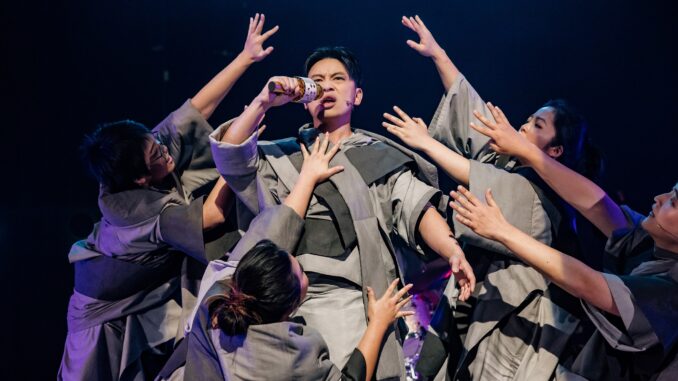
[THE DEEPENING CRISIS]
On April 13th 2022, New Zealand said goodbye to gathering restrictions. When we moved from the Red to Orange Covid-19 traffic light setting, live performance could go ahead without any capacity limits for the first time in months.
Later in the year we’d say goodbye to the entire traffic light protection framework. With boosters and antivirals, we had charted our way out of the pandemic and life could return to normal.
Except it hasn’t. And life certainly hasn’t returned to normal for Aotearoa’s performing arts.
Look no further than Court Theatre which this week cancelled four performances of its summer musical Rent due to Covid-19 infection within the company. Court Theatre is one of the few NZ theatre companies with enough resources to hire a full set of understudies and swings, but even this measure wasn’t enough to prevent cancellation.
Rent joins other high-profile shows that have had to cancel performances this month in the midst of the current summer wave of Covid-19 spread: the Royal New Zealand Ballet was forced to cancel some Christchurch dates and the entire Auckland season of Venus Rising (a production that had already been postponed four times); meanwhile Circa Theatre had to cancel a week of performances of its sold-out Pinocchio Pantomime. The Basement Theatre’s improvised Christmas show Sleigh! picked up cases through daily RATs tests, but made it through with a large rotating pool of cast members.
Having dropped Covid-19 protection measures like gathering limits, it turns out that it’s not the protections that jeopardise the viability of the performing arts, but the virus itself.
I wish this 2022 annual wrap-up could be a triumphant one – that the pandemic was indeed behind us. Last year was a tough year, but in my 2021 Year in Review I still wanted to celebrate the invigorating work that was fortunate enough to make it to the stage.
But we end 2022 more divided, more exhausted, less hopeful.
The performing arts in Aotearoa are in crisis.
I don’t write that statement lightly. It could be said that the arts are perpetually in crisis – never enough resources to go around, always having to justify our value and existence. We’re good under a crisis too (we’re nothing if not creative!) – working more with less, innovating, trying different ways of working and presenting. But I think there is value in naming the crisis facing performing arts and arts, culture and creativity in New Zealand more generally.
The cost of living is biting both creatives and audiences, with inflation rising above 7% in 2022. It’s more expensive to make and present work. There’s less disposable income to spend on arts experiences. There’s also a glut of international acts touring the country over the next 12 months demanding top dollar.
Nurses, firefighters and tertiary employees are some of the workers who have battled for higher wages, making clear that anything less than a 7.2% pay rise would be an effective pay cut.
How have arts practitioners fared? Creative New Zealand’s remuneration survey (of artists and arts practitioners working as contractors and employees in the arts sector) provides a stark answer.
Creative sector workers as a whole had a 0% median base salary increase over 2021. The expected salary increase for artists in 2022 was also 0% (salary for management roles were expected to increase by 2%, with 1.7% for other staff – also too low). Wages for creative sector workers are already incredibly low – and with high inflation are going backwards.
The arts and event sector has a critical labour shortage, with designers, technical crew and stage managers in short supply. Many had left the industry over the past few years for more financially secure careers. Auckland Theatre Company’s Jonathan Bielksi told Newsroom “We’ve lost enough people for [theatre companies], big and small, to be saying, ‘Where are the stage managers? Where can we get people to do lighting and sound?’ It’s really quite a stretch.”
There’s more demand than ever before for funding, with Creative New Zealand (the Government’s arts funding entity) reporting that “after a period of some growth, we’re having to say ‘yes’ to fewer applications… the trend of unmet demand is not reverting to an earlier norm; it’s in fact increasing.” At the same time as this acute need for greater funding and resourcing, CNZ has sustained extraordinary attacks from within the arts community and wider public, making gaining additional funding for the sector a political hot potato.
Meanwhile in Auckland, the council’s Auckland Unlimited entity (which runs the council’s performing arts venues under Auckland Live) is having to justify its existence to new Mayor Wayne Browne. Local arts grants are under threat in Auckland Council’s draft budget. Councils across the country will be weighing up how they balance their budgets in the midst of rising inflation.
And then there’s Covid-19.
When Covid cases are high (like at the start of this year, winter, and now summer), the performing arts sector has seen that shows inevitably face rehearsal disruptions or are forced to cancel performances or even entire seasons due to infections within the company. (Not to mention losing potential audience members because they too are isolating).
Shows that register with the Ministry of Culture and Heritage’s Arts and Culture Event Support Scheme have been able to access financial support if a “lead performer” has to isolate. This scheme is due to end in January 2023, but there’s no reason not to expect more waves in 2023 and for Covid rehearsal and performance disruptions to continue.
There’s also the physical and mental burden of Long Covid (something I have personally faced), with affected arts practitioners also having to step back from or cancel work. Long Covid is an unseen crisis, with affected independent practitioners particularly exposed without wider support.
It’s a crisis alright.
And it is one that we need to take seriously. Because when you have an arts crisis, you are also dealing with an education crisis, a health crisis, a social cohesion crisis.
These are areas arts, culture and creativity serve particularly well – supporting the creativity and expression of young people, enriching our wellbeing, bringing us together.
But if this crisis of low wages and strained funding extends, then the creative sector will continue to contract. More people will have to leave the creative sector – and new voices will choose not to enter it.
What do we miss out when we don’t value and fund arts, culture and creativity? Responding to Mayor Brown’s proposed cuts, Professor Peter O’Connor writes:
Research demonstrates that the arts are lifelines for many of our young people in this city. They provide the reason to get out of bed, to mix and meet with others… Research shows that the arts bring people together to mourn, to remember, to celebrate and question our history. They construct our identities as individuals and communities in a way that nothing else can. The arts breathe life into a city, give it colour, soften the ugliness of everyday living in a cost-of-living crisis, by reminding us that shared joy and laughter makes a city liveable.
Dance artist and choreographer Lucy Marinkovich of Borderline Arts Ensemble argues:
The arts are a laboratory for innovation, collaboration, conflict resolution, and emotional intelligence. Artists are expert communicators and we need visionary thinkers to help us make sense of the contemporary world. An Australian study found that each artist had the impact of creating six other jobs in other industries. Financially, there is a stronger case for increasing arts funding than abolishing it. The ‘no-strategy strategy’ leaves the arts starving on the bare minimum.
How did we get here and where do we want to go? Here are the ups and downs of 2022:
OMICRON RED
2022 began with the Omicron variant hitting us with force. On the 23 January Prime Minister Jacinda Ardern announced that all of New Zealand would move to the Red traffic light setting, with events restricted to a cap of 100 people with 1 metre distancing.
In my post three days later, ‘Omicron comes for the Arts: Holding on under Red’ I surveyed the initial impact of the Omicron outbreak.
While the message was that most business could continue as usual under Red (unlike previous lockdowns), this was not the case for arts and events – it was not financially viable for most events to operate under Red (not to mention the increased risk of Covid infection shuttering the event anyway). A “staggering number” of arts events across the country immediately shut down following the Prime Minister’s announcement. As The Big Idea put it, Red had the same effect as a lockdown for the arts community: “Doors closed, money refunded, dreams shattered.”
Cancellations piled up. Auckland Pride (set to offer the biggest Queer Arts programme in the Festival’s history). Q Theatre’s summer season. Basement Theatre closed its roller door again. Hamilton Garden Arts Festival. The Pasifika Festival cancelled for the third time in four years. Even the NZ International Comedy Festival, scheduled for April/May, ended up cancelling due the lack of preparation time for artists to create their shows and to deliver a large-scale event.
Auckland Arts Festival and Aotearoa New Zealand Festival of the Arts cancelled most of their in-person events (NZ Festival’s Destination Mars, designed with Red in mind, was able to continue at Te Papa). A handful of shows were able to make the pivot to digital, including the rousing Te Ahu Taiohi, a collaboration between Taki Rua and Te Rākau empowering young leaders of Aotearoa nō Porirua through the performing arts.
NZ Fringe, which had pre-emptively capped its ticket sales for ‘Red Light’ capacity, was one of the few festivals to continue over February and March. Artists took a financial hit with reduced capacity, and cancellations piled up regardless – 35% of Fringe shows were impacted by isolation requirements for Covid positive cases and household contacts.
Auckland Theatre Company went ahead with its production of Grand Horizons at the ASB Waterfront, but on 25th February cancelled all remaining performances due to “rising infections within the community” (12,011 cases were recorded on this day).
Overall, most events were shuttered up and down the country between February and April.
MCH Manatū Taonga’s Arts and Culture Event Support Scheme provided a lifeline for many events and protected Aotearoa’s performing arts sector from collapse during the initial Omicron outbreak. Offering financial support for registered events that had to cancel or lost income due to the move to the Red traffic light setting, the scheme was extended as part of the Government’s announcement on February 2nd of $121 million in new spending for arts and culture sector to get through the Omicron outbreak.
As of November 22nd, $29.7million of payments have been approved with over 400 events receiving payment (including the Comedy Festival, Auckland Pride, Festival of Live Art, Auckland Arts Festival). Restrictive eligibility requirements however meant not everyone could access the scheme, and with $92.5million in the total kitty there is still much unspent.
Something that wasn’t on offer during the Omicron outbreak was the wage subsidy (which had helped during previous lockdowns). MCH offered a welcome one-off grant of $5000, although had to design the payment system from scratch and it wasn’t until the end of February that people were able to apply for the scheme.
Rachael Longshaw-Park’s feature ‘The Realities of Red for Arts and Events Industry Workers in Aotearoa’ interviewed a range of arts and event practitioners about how the Omicron outbreak had impacted them, and investigated the holes in the support packages being offered. Rachael concluded:
With few places for people to turn we need to do away with the Government’s current reactionary approach; the arts and events sector requires ongoing targeted support with equitable access. The government must be proactive in ensuring the sustainability of our industry through till the end of this pandemic and beyond.
Indoor gathering limits were raised on 25th March from 100 to 200 but had little material difference to shows being able to go ahead. Silo Theatre’s Sophie Roberts commented: “Our sector is still in crisis… I think we’re looking at a really long road ahead of us to rebuild what has been lost over the last few years.”
ORANGE
April saw the end of vaccine pass requirements and the end of gathering restrictions as we moved into Orange.
I surveyed the changed landscape in my May feature, ‘Orange is the New Red: New Zealand Theatre and Performance under Orange’. Though many protection restrictions had gone, Covid was still disrupting shows, and ticket sales were sluggish.
A bright spot was NZ performers were touring internationally again: Indian Ink Theatre Company undertook its first international tour since our borders first closed in March 2020, opening Paradise or the Impermanence of Ice Cream at the Maui Arts and Culture Center’s Castle Theatre on 26th March as part of a tour to four of the Hawaiian Islands and Arizona, USA. Chris Parker and A Slightly Isolated Dog Theatre Company were part of a contingent of New Zealand performers playing at the Melbourne International Comedy Festival in March/April.
On 19th April Terrapolis became the first show to play at Q Theatre in eight months. Co-creator Julia Croft wrote:
I have really missed you. I missed being in a room with you. In a theatre bar with you. I missed seeing you in those very, very red Q bathrooms as you are running away to a show in Rangatira, and I was running away to a show at Loft. […] This show was meant to open on 18th August last year, and mid dress rehearsal Jacinda and Ashley told us to go home. So we did. And our beautiful set hung in the theatre, all alone, for months. I and Nisha talked about that set in that empty theatre all the time. That was the last time a set was in that room – it’s been empty since we packed it out in December last year.
As an indication of the reduced theatre offerings (and the hesitation to return to the theatre), Theatre Scenes didn’t offer our first 2022 show review until May 19th – Morgana O’Reilly’s Stories about my Body.
I checked in again on life under Orange in July during a winter surge in Covid cases, arguing that ‘Going to the theatre should be a low-risk activity. We need to make our live performance venues as Covid-safe as possible’. I posed the question, “when Covid continues to pose a very real threat both to the arts sector specifically, and our health system at large, why does it seem like Covid is being treated as no big deal in many of our live performance venues?” While mask wearing was encouraged under Orange, it was apparent it had drastically fallen away. The country’s collective public health response had moved to an individualised risk assessment, and venues across the country took varying approaches to masks and air quality over this period.
Covid cases surged again in Winter. It got to the point that Little Andromeda had to introduce a “self-serve refunds” policy in July. The venue posted:
the last few weeks have gotten a bit crazy with the amount of ticket cancellations coming in – we’re SUPER happy to cancel tickets (thank you so much for keeping your sickness at home!) but shit they’re coming in thick and fast right now, and when we’ve got staff down with covid too it’s just getting physically difficult to keep up with all the refunds.
On the 12th September New Zealand moved out of Orange and the traffic light system itself came to an end. Venues and creatives would have to continue to navigate changing pandemic conditions themselves without community-wide efforts.
A FUNDING TEMPEST
The Government’s 2022 Budget in May set the scene for arts funding becoming one of the biggest news stories of 2022. The New Zealand Symphony, the Royal New Zealand Ballet and Te Matatini received funding increases (although even a doubling of Te Matatini’s funding didn’t address the inequity compared to the traditionally European artforms). Significantly, Creative New Zealand missed out on an increase.
Without further Government support, CNZ signalled it wouldn’t have as much pūtea to invest as the previous two years. This came to a head in September, when the results of CNZ’s Kahikatea (recurrent funding for three years) and Annual Arts Grants were announced (one year of funding up to 150k). While Te Rākau Hua o te Wao Tapu, Te Tairāwhiti Arts Festival, Kia Mau Festival and Toi Ngāpuhi all received Kahikatea funding for the first time, performing arts organisations Shakespeare Globe Centre New Zealand and Arts on Tour were two of four applicants removed from the Kahikitea programme. Meanwhile, over half of the applicants to the Annual Arts Grants missed out, including many of our top performing arts companies.
Many of those unsuccessful applicants then crowded the field in the final Arts Grants of the year (project funding up to 75k) where a record $10.5m was requested from 239 eligible applications. 63 projects were awarded a combined $2.7m, CNZ miracling up an extra 500k to increase the round’s budget. CNZ took the unusual step of partially funding 17 projects that otherwise would have missed out completely; Gretchen La Roche (new Senior Manager Arts Development Services) explained that “with demand being so high, and with concern for the ongoing challenges facing the arts community, many applicants won’t be funded at the level they requested.” While many of the applicants that had missed out on the previous rounds were successful this time (albeit for a reduced amount) this just kicked the can down the road, with many more missing out.
Auckland Pride was unsuccesful in an earlier Arts Grants round for an application to continue funding its Creative Director role. Recently appointed Creative Director Nathan Joe broke the news in a public post, calling for greater sharing of resources and support for emerging artists:
Without fetishising resilience, as emerging artists fall through the cracks, it will be up to our arts administrators, arts leaders, arts gatekeepers to throw their best life rafts, to throw out their best lifelines, to open up their doors and resources, to make the stepping stones and pathways clearer than ever.
But it was Shakespeare Globe Centre New Zealand, which runs the popular Sheilla Winn Shakespeare Festival for young people, which became the centre of an international tempest of funding controversy following its unsuccessful Kahikatea application.
The whole episode was outrageous, but not for the reasons you might think. As Sam Brooks reported, the future of the Festival was never in doubt. The requested $31K per year over 3 years represented 10% of SGCNZ’s total budget, and the organisation was a clear outlier in the Kahikatea fund (a similar schools performing arts competition ShowQuest is funded through the Ministry of Education).
SCGNZ Globe supporter Terry Sheat stoked the sparks of outrage when he wrote a racist diatribe attacking CNZ and calling for a public inquiry. Sheat seized upon commentary from the funding process questioning the relevance of Shakespeare to contemporary Aotearoa. (The eventual release of the funding decision document demonstrated that commentary from the independent assessors of the application had been selectively quoted and taken out of context.)
While it took a while for media to pick up interest, soon the story was everywhere, even hitting international headlines. The denial of funding was framed as cultural vandalism, CNZ cancelling Shakespeare.
With all the focus going to SGCNZ there wasn’t space to acknowledge the organisations that gained funding for the first time, nor the many other organisations and artists impacted by CNZ’s reduced funding. As I argued in a column for Stuff, ‘The fuss over Shakespeare is a distraction from the real scandal of arts funding’: CNZ has not been given enough money to meet the needs of Aotearoa’s arts sector as it rebuilds from the pandemic.
As the Shakespeare brouhaha continued, CNZ belatedly responded to interview requests, with CNZ CEO Stephen Wainwright even appearing on Sean Plunkett’s The Platform. After Prime Minister Jacinda Ardern getting asked questions about the funding decision in her media stand ups, she made an extraordinary intervention: SGCNZ would receive funding from the Ministry of Education. (The PM was an alumni of SGCNZ, playing Bottom in A Midsummer Night’s Dream)
All’s well that end’s well, for SGCNZ at least. There was no intervention on offer for other arts organisations that had lost out on funding. And SGCNZ and Terry Sheat’s campaign against CNZ was destructive for the wider arts sector, potentially open the door for funding cuts rather than much needed resourcing. The affair unleashed a host of racist comment and CNZ staff were harassed.
Comedian James Nokise wrote the definitive piece about the saga’s racism for E-Tangata:
A passion for Shakespeare is not an excuse to be racist, but it’s also not an excuse to skirt close to being racist either. It certainly is no excuse for not condemning the outspoken racist dog-whistling of impassioned supporters, particularly when they aren’t simply championing Shakespeare but your entire organisation. If your friend acts racist in public, and you don’t call them out, what does that make you? No deep love of any artist justifies throwing a group of people under the bus, especially over funding, and especially over funding that never endangered your project in the first place. Shakespeare has the privilege of being watermarked as a quality product across the world. Māori and Pasifika work has a range of barriers to overcome, and making them a strawman opponent for international Shakespeare fans just adds another.
Following Nokise’s piece, SGCNZ issued a full apology.
As I explained in an expanded article on ‘Everything you ever wanted to know about Creative New Zealand and Arts Funding in Aotearoa‘, it was the Arts Council (the governing body that sits above CNZ’s staff) made the final call with Kahikitea funding following a rigorous process involving two independent assessors on each application, an external panel, and feedback from CNZ staff. With a limited pool of money, not everyone could be funded. While not necessarily popular, I don’t think there are grounds to fault the actual decision. If you were establishing a national schools competition today would you choose still Shakespeare, or would you choose New Zealand playwrights?
But we can fault CNZ’s relationship management. It is understandable that the result would be distressing to applicants (especially if you had been a recurrently funded client over a number of years like SGCNZ and Arts on Tour), and the case demonstrates there is room for improvement in both the process itself and how the decision is communicated.
In December eyebrows were raised high when CNZ announced that it had selected Toi ki Tua, a subsidiary of We are Indigo, to establish a Digital Arts Commissioning and Capability Service. We Are Indigo is the subject to some serious allegations (substantive details have not been publicly released). While CNZ proactively released its procurement document to demonstrate its due diligence, it is notable that CNZ did not engage with the critical report by Callaghan Innovation that is the object of dispute. The digital services initiative follows a separate pilot programme offered by CNZ earlier this year exploring NFTs (which have questionable credibility). The onus will be on both Toi ki Tua and CNZ to establish the value of the digital service for the sector.
CNZ closed the year with a concession that processes and programmes need to change:
We’ve heard your call for a different approach to arts funding and agree that it’s time to do things differently…The consequences of where we are now are awful. We’ve heard this from practitioners participating in Arts Grants who feel inadequately supported and it’s also awful for our people who are increasingly the messengers of bad news…we’ll be coming to you in March to seek your input on co-designing a better approach to funding for 2023/24.
The wider funding context is that the Ministry of Culture and Heritage Manatū Taonga has itself been powered-up as a funding provider over the duration of the pandemic at the expense of CNZ. In July MCH announced the $28 million Cultural Sector Regeneration Fund, replacing previous Covid-19 recovery programmes. The fund is “looking to find and fund strategic, sector-led initiatives, that will have lasting benefits for arts, culture, and heritage in Aotearoa New Zealand.” After being burnt by some of MCH’s previous funding decisions, public feedback was opened to all applications and 8000 submissions were received for round 2.
Successful performing arts groups so far include The Professional Theatre Trust (up to $174,710 to establish a professional theatre company in Nelson), Massive Company Trust (up to $423,845 to deliver theatre training for young people and teachers across regions with limited access to quality development) and Christchurch Arts Centre (up to $196,000 to support a new venue for circus, comedy, music and associated performing dance including dance and cabaret in the Arts Centre in Ōtautahi). This is fantastic news for these applicants and worth celebrating, but this is a one-off fund and the lack of a coherent arts strategy is worrying. $100K isn’t much to help establish a new professional theatre company – and then what? Will they need to join everyone else going cap in hand to CNZ? And while MCH is able to fund exciting new initiatives for arts, culture and heritage, core business goes unfunded or underfunded because CNZ does not have the funding to meet the demand.
I wrote to the Government’s arts ministers and the spokespeople of the major political parties, alerting them to the current funding constraints and asking what they will do. The only reply I received was from National’s arts spokesperson Simon O’Connor, who responded “I am still engaging the sector at this time so not well placed to yet confirm what National will or won’t do.” The lack of engagement from Labour, Greens, Act and Te Pāti Māori is concerning.
Arts funding has had a particularly political year in 2022. With an election looming in 2023, it is vital that increased support for arts, culture and creativity features in the political agenda. Australia’s Government is set to unveil a new National Cultural Policy in 2023, which prompt us to think about what a similar policy could achieve in New Zealand. But we can’t wait for the politicians to come up with policies – the arts sector needs to clearly articulate our needs and the policies that would be gamechangers.
THE AOTEAROA CANON
Funding matters because of the arts experiences it enables – so let’s turn our attention to the year onstage.
Of the work that was able to make it to the stage dodging the Covid waves, 2022 was notable for two complementary currents: the desire to charge forward and continue to tell a broader constellation of stories on Aotearoa’s stages; and the desire to look back, to understand where we have come from in order to understand where we are going.
Wellington’s Circa Theatre hosted two major revivals. The verbal and physical poetry of Skin Tight by Gary Henderson (which debuted at BATS in 1994) was given new life by director Kathy McRae and dream team performers Ella Gilbert and Arlo Gibson, allowing us to critically engage with the values of te ao Pākehā.
Wednesday to Come by Renée (surely Aotearoa’s greatest living playwright) was given an overdue revival by director Erina Daniels (the play debuted at Downstage in 1984). Reclaiming the play as a work created by wahine toa, for the first time the production featured a Māori and Pākehā whānau navigating the 1930s depression (Jane Waddell, who had played Iris and Mary in previous productions, returned this time as Granna). Tikanga Māori revealed deeper dimensions to the setting and characters, the production presenting a vision of our nation’s past that offers inspiration for our nation’s future.
Covid impacts saw the late introduction of Flagons and Foxtrots by Alison Quigan and Ross Gumbley (which debuted at Centrepoint in 1999) to Court Theatre’s season, providing nostalgia for 1960s era Saturday Night Dance. Covid protocols meant everyone anachronistically masked up when audience members were invited to the stage for the last dance of the night.
Auckland Theatre Company partnered with Pacific Underground for Dawn Raids by Oscar Kightley (first presented at Herald Theatre in 1997). Reviewer Anuja Mitra outlined the historical significance of the production:
Dawn Raids by Oscar Kightley was first staged by theatre collective Pacific Underground in 1997, 20 years after the national outrage. The play’s snapshot of the illegal raids on Pacific people under the guise of cracking down on overstayers would have hit home for everyone who experienced it — everyone whose families and friends had faced not only the violation of their domestic space but their right to call themselves New Zealanders.
Fast forward two and a half decades to 2021 and Prime Minister Jacinda Ardern issues a historic apology for the raids, acknowledging the government’s discriminatory application of immigration law and the dehumanising treatment of Pacific people, Māori and other people of colour by Police. With those topics already hot on our nation’s lips, it’s easy to see why Pacific Underground and ATC felt a re-staging of Oscar Kightley’s play was warranted this year.
Indian Ink Theatre Company’s Jacob Rajan farewelled his landmark play Krishnan’s Dairy (which debuted in 1997 at BATS Theatre) with a 25th anniversary national tour, swearing this would be the final time he would perform the show (he wanted to say goodbye while he still enjoyed performing it).
I had the fortune of following Rajan as a researcher as he toured to Tāmaki Makaurau Auckland, Kāpiti, Ōtautahi Christchurch, Kirikiriroa Hamilton, and finally Te-Whanganui-a-Tara Wellington where it fittingly played its final performances at the national museum Te Papa. I interviewed audience members, who shared the profound impact this play can have on people, including people who have returned to the play multiple times in their life.
As a new viewer, the production prompted Theatre Scenes reviewer Jess Karamjeet to “consider why – and for who – this art has been created, and what it means to open our hearts to people who might not always understand.” Jess wrote:
The narrative of Krishnan’s Dairy is earnest, seen through the classical guitar strumming and Kiwi accent of Jacob’s first character – which, on first experience, felt jarring. Yet, in the finale moment when his song is reprised it brings me to tears. It encapsulates, for me and I’m sure for many others, what it means to be a second generation immigrant: an accent ‘not matching’ your skin colour; cultural awareness rooted in what your parents chose to tell you, because they were hiding you from the racism of the only country you’ve ever called home.
NEW WORK & DIRECTIONS
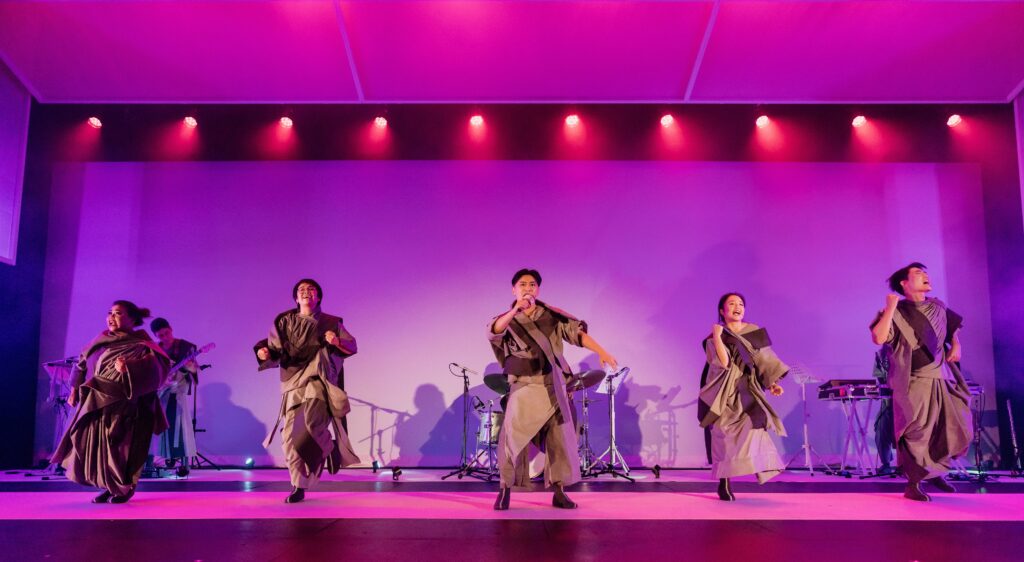
Nathan Joe’s Scenes from a Yellow Peril, directed by Jane Yonge, was an exciting and agenda-setting theatrical experience: a head-spinning amalgam of performance poetry, gig theatre and postdramatic theatre, Scenes was a work about identity, belonging, and marginalised histories, an East Asian New Zealand collective taking up space in Auckland Theatre Company’s ASB Waterfront Theatre. While the published text chronicles the twists and turns of the four year journey to bring the show to the stage (including multiple denied CNZ funding applications), Scenes from a Yellow Peril defines the other strong current in 2022: an impatience with the status quo, the demand for more voices, more perspectives.
Reviewer Cynthia Lam wrote:
Somewhere towards the end of the show, it struck me how momentous this occasion is: a show that confronts racism and spins all its conflicting and messy feelings on its head. It is brave. It is bold. The performers, each with their own unique qualities and personalities, are relatable and personable. There was honesty and openness. They took centre-stage. And as a Chinese-New Zealander, I could relate. Joe ends the show by apologising, a series of ‘I’m sorry…’ statements (which is not untypical in Chinese culture). Joe says ‘I’m sorry for making a big deal about racism’, yet there is an important message embedded: ‘that anger can fuel you’, and I say YES to that.
Auckland Theatre Company also premiered Emily Perkin’s new sci-fi play The Made, which Anuja Mitra reported was “a terrific theatre experience with themes that will only grow more relevant as artificial intelligence becomes more prominent in our lives.”
Silo Theatre’s production of seven methods of killing kylie jenner directed by Keagan Carr Fransch marked Silo’s return to the live stage after a Covid hibernation of 18 months. While it was a British script by Jasmine Lee-Jones, the programming signalled Silo’s responsiveness to the global #BlackLivesMatter movement. In contrast, Silo’s next production, The Writer (also by a British writer, Ella Hickson) delayed by the pandemic, didn’t fully chime with the contemporary moment: the play’s #MeToo inflected gender politics opted too easily out of a larger intersectional exploration. Reviewer Erin O’Flaherty asked “So, what does it mean to make truly challenging, radical art?”:
On the one hand, Silo wants to use art to provoke thought about society, perhaps even to change society. On the other, it is bound by the capitalist system and traditional pay structures. Indeed, this is not just ‘The Writer’ but ‘The Milford Asset Management Season of The Writer.’ Being in the Q foyer on opening night only heightened this experience for me. There I was drinking my free glass of wine and milling among industry big-wigs – all of us returned so easily to the comforts of our (privileged) everyday lives.
Silo’s final production, The First Prime-Time Asian Sitcom (by local playwright Nahyeon Lee) ended up being in dialogue with The Writer, both invested in the ethics of writing and featuring a ‘discussion-panel-within-a-show’ which cast a critical eye on work we had just seen play out. The play struck a chord with reviewer Jess Karamjeet and her own experiences in writing rooms:
This industry – small yet over-saturated, with creatives starved for funding, support and recognition – is incendiary. Nahyeon has tossed a match into it. […] She has put her head above the parapet, acknowledging in the show notes that ‘This could be my first and last play with a mainstream theatre company.’ She was able to articulate the experiences of so many before her – and that tired phrase, ‘the burden of representation’ which still exists even when there is more than one ‘minority’ voice in the room. I believe this play needs a re-mount, in a larger theatre, and to enter the canon of New Zealand plays.
After a series of Covid disruptions, Black Creatives Aotearoa brought Po’ Boys and Oysters by Estelle Chout to Basement Theatre, directed by Dione Joseph. The play’s dinner party setting was the type that Pākehā playwrights like Roger Hall used to get lauded for, and Chout’s take was wholly refreshing. As Jess Karamjeet wrote:
This was the first queer, black love-story on stage in Aotearoa – a landmark celebration by Black Creatives Aotearoa…. Statements are fierce and their body-language is confrontational – and it is glorious, and funny, and authentic. Moments like these highlight the creative impact of Black Creatives Aotearoa – when three multifaceted, complex, black women take up space without being moderated by a Pākehā lens.
The World’s First Lovers by Jessica Latton was another debut that made it to the stage after an earlier Covid postponement, opening at Ōtepoti Dunedin’s Allen Hall in December. The Pantograph Punch’s Mya Morrison-Middleton wrote that the play “has the potential to become a defining piece of Ōtepoti and Kāi Tahu theatre.”
Back in Tāmaki Makaurau, Keagan Carr Fransch followed Kylie Jenner with Together Forever by Joni Nelson, which sung “with queer asides and jokes; the audience, feeling seen, respond in kind” (Jess Karamjeet). The production was produced by Hot Shame, a collective formed to tell queer stories that also produced Nathan Joe’s Gay Death Stocktake and Dan Goodwin’s Chrome Dome and Schizo, which offered a “kaleidoscopic vision of schizophrenia, love, and the frustrations of navigating a hostile health system” (Irene Corbett).
A surprising highlight for me this year was the Royal New Zealand Ballet’s production of Loughlan Prior’s gloriously queer Cinderella; Brigitte Knight highlighted “the romantic pas de deux between two men presented free from farce or parody feels like a milestone for the classical ballet canon.”
A final highlight for me was Ana Chaya Scotney’s ScatterGun: After The Death of Rūaumoko. I saw the production during Red-level NZ Fringe. Ana’s musician was out of action in isolation, but Ana’s breath-taking writing and performance carried us away, paralleling the atua’s story with an urban fever dream responding to grief and the death of the narrator’s brother.
COMING TOGETHER
These productions demonstrate why its all worth it – and why we need to continue to expand the resourcing of our performing arts and cultural sector.
MCH’s Event Support Scheme is set to end on 31st January 2023, with $62.5million still unspent (as of November). Manatū Taonga need to signal how it will use the remaining funds. With further Covid waves likely in 2023, it would be prudent to extend the scheme to continue to cover shows that have to cancel due to Covid infection. But perhaps too MCH could send a portion Creative New Zealand’s way to strengthen its resources as it embarks on co-designing changes to its funding programmes.
And while the performing arts are in crisis, there have been some other good news story over the year.
In Hawkes Bay the final development of Toitoi – Hawke’s Bay Arts and Events Centre was completed and the full municipal building reopened after 8 years.
Wellington savoured the grand reopening of its St James Theatre (Auckland can you do yours too?), and a Council scheme has enabled the Hannah Playhouse to return to the fold as an affordable space for performance and development. The Wellington Council’s Living Wage scheme for Events Fund recognises the value of artists and should be rolled out across the country (MCH are you watching?).
In 2020 the arts community articulated the need to build back better. With the focus on just trying to survive over the past two years, progress has been understandably slow.
Silo Theatre has made the bold call to “cancel” 2023, choosing to spend next year prioritising the development of new work rather than putting on productions:
The impacts of the pandemic on our sector are serious and long lasting. This environment has demanded that we look closely at the impact we want to make in the future and how we can continue to be a place for artists to expand their practice and create their most courageous work. Reverting to business as usual not only feels boring in this context, it feels dangerous. The rush to return to the status quo doesn’t sit right with us: funding for the arts is shrinking, audience attendance is down the world over, thinking and planning has become short term, reactive and risk averse, practitioners are burning out and leaving the sector for better pay and greater security. The time for transformation is now, and this is our way of addressing how we can maintain our vision for delivering powerful and expansive ideas on stage and foster a greater depth of practice in the work we create.
As Silo indicate, the status quo is broken.
While putting efforts into survival, there are some areas all arts organisations (especially publicly funded organisations) should be focussing on: wage growth and work conditions, accessibility, impact on the environment. The Shakespeare funding saga may have kicked off angst about decolonisation, but I hope that it’s not controversial to say that all arts organisations should be taking meaningful action around decolonisation and how they uphold Te Tiriti o Waitangi. It doesn’t mean cancelling Shakespeare, but valuing te ao Māori and decentering the Pākehā/European way of seeing the world and way of working as the default. Many already get this. It’s about being stronger together in our difference.
The arts have a powerful role in bringing us together. The Māori Sidesteps, who performed a season at The Court Theatre, is one group leading the way. Reviewer Josiah Morgan reflected:
It is fascinating to contemplate the way that the Sidesteps invite the audience to unite with them in song as there are some parallels between the structure of the audience engagement and the discussion of Te Tiriti in the performance itself. In some moments, the audience and the performers interact with each other as key twin parts of scenes or songs. In much the same way, the Sidesteps call on New Zealanders to “be a proud Māori! Be a proud Pākehā!” This echoes the contemporary call in Aotearoa for both tangata tiriti and tangata whenua to make progress toward decolonising the bicultural nation that we live in, as twin inhabitants of a nation, together, whilst, of course, decolonising ourselves, each other, and our systems in the process. (Also, land back).
May the arts sector come together in 2023 to support each other through this crisis and continue to promote the value and benefit of arts experiences for all New Zealanders.
SEE ALSO:
– Theatre Scenes: Aotearoa New Zealand Theatre and Covid-19: A Timeline
Theatre Scenes Theatrical Year in Reviews: 2021; 2020; 2019 ; 2018 ; 2017 ; 2016 ; 2015 ; 2014 ; 2013 ; 2012 ; 2011 ; 2010

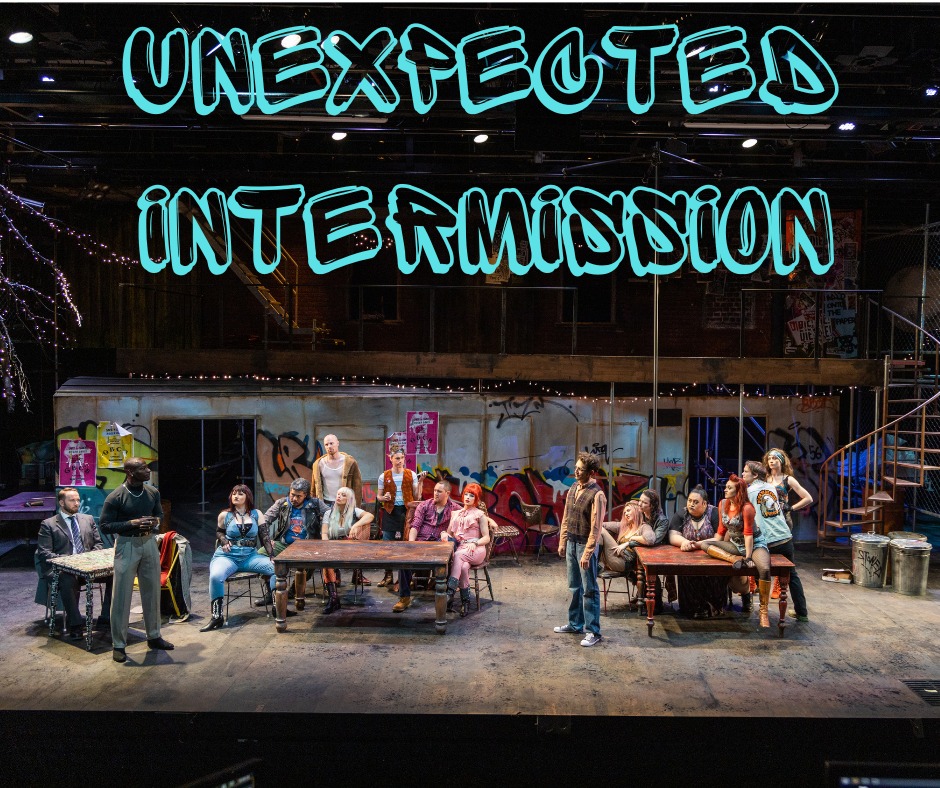
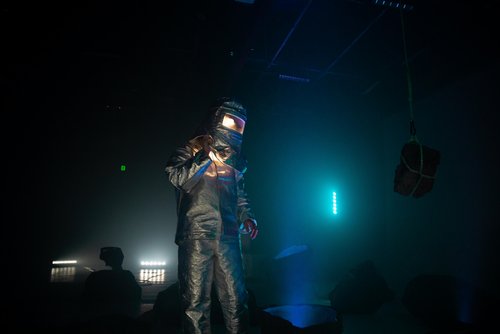
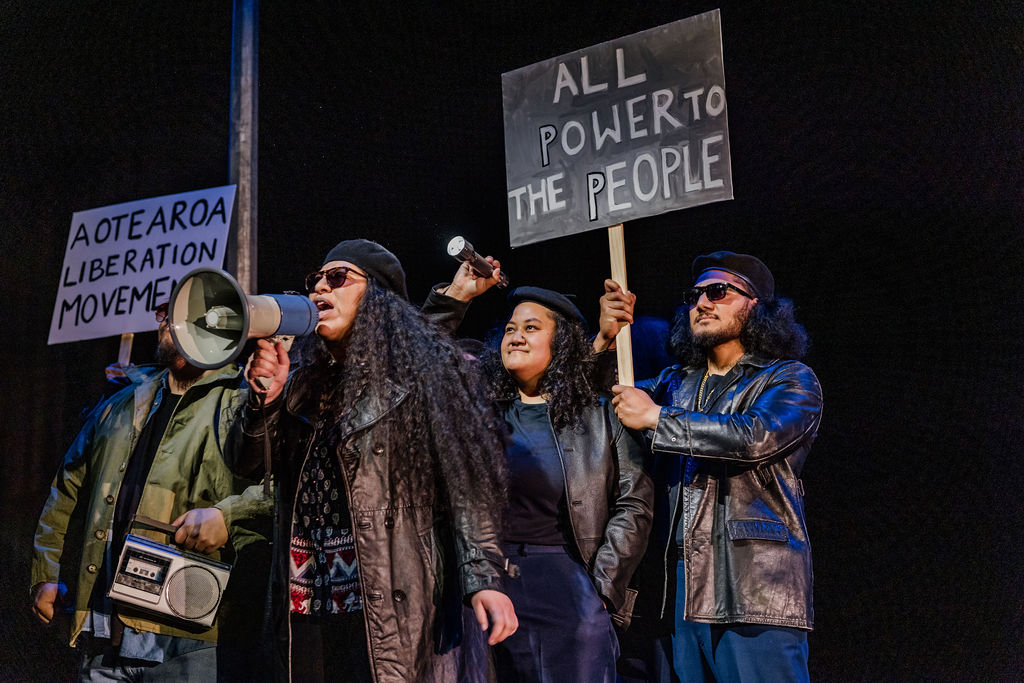
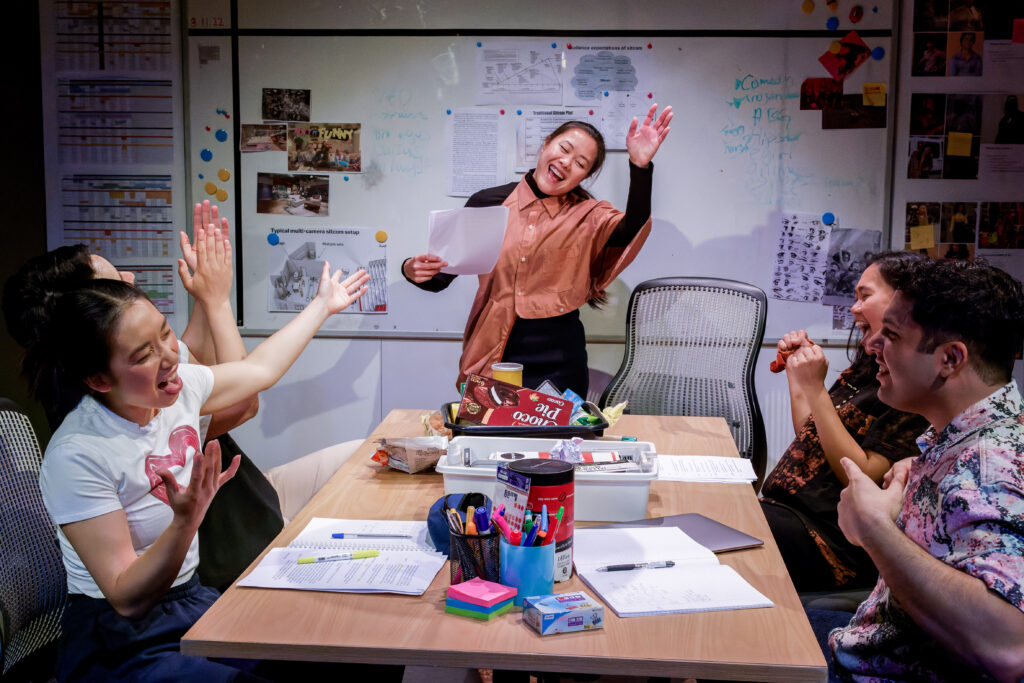
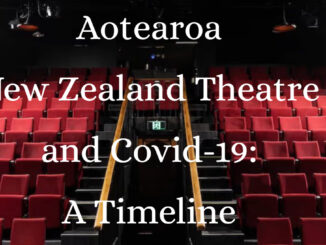
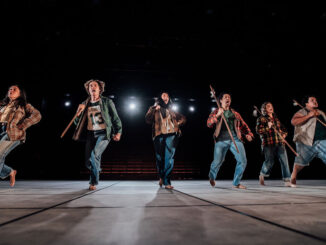
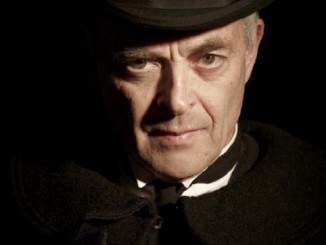
Leave a Reply